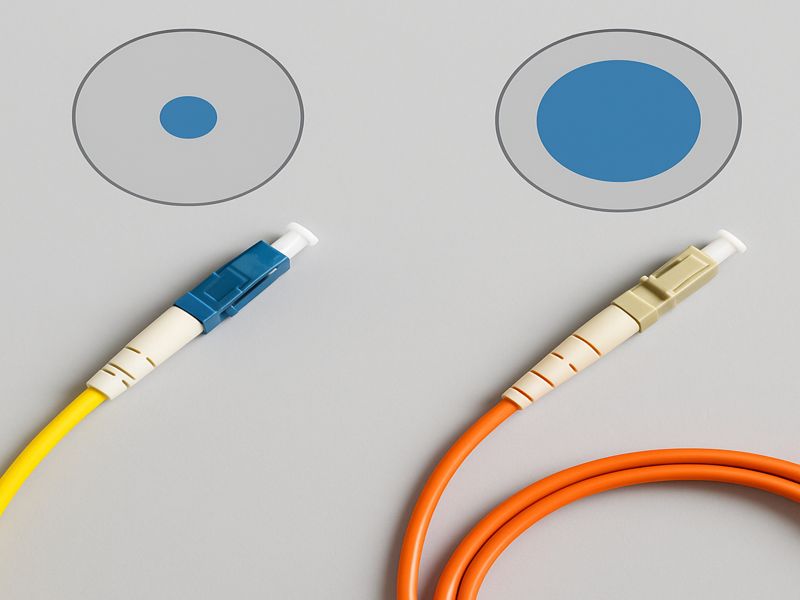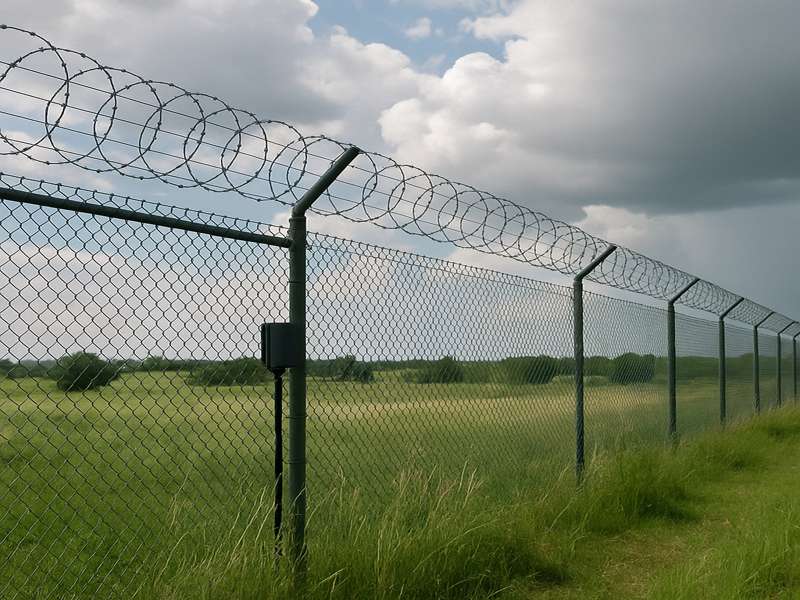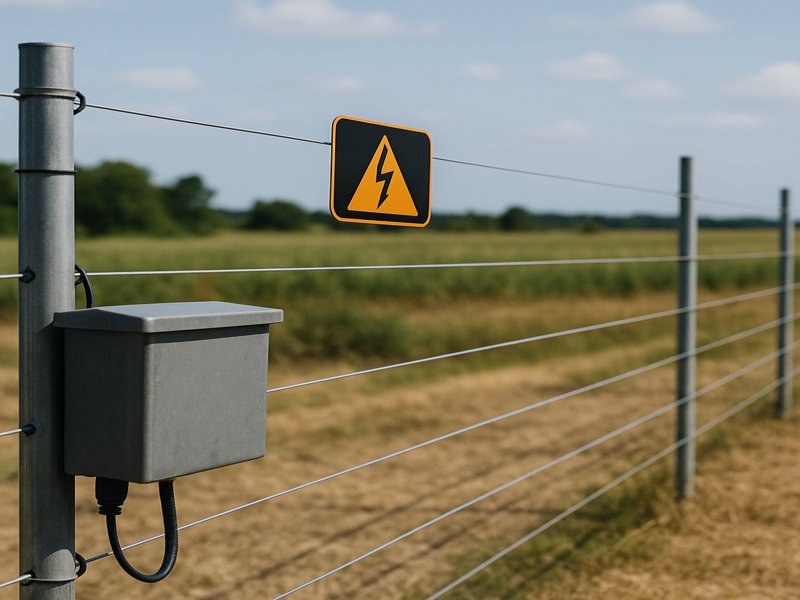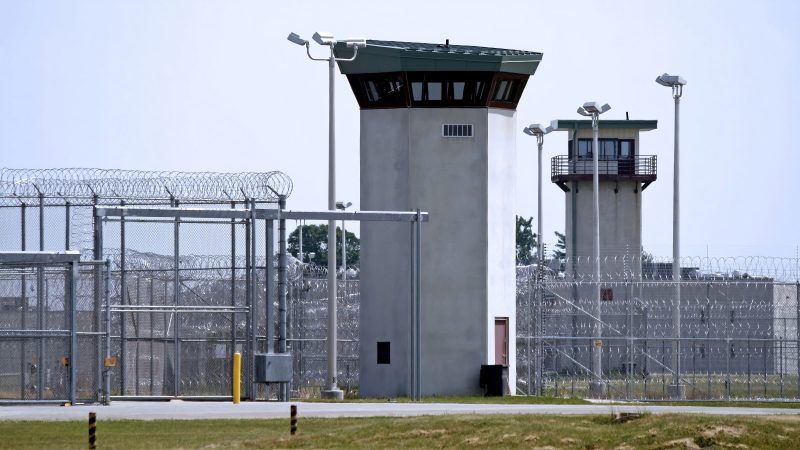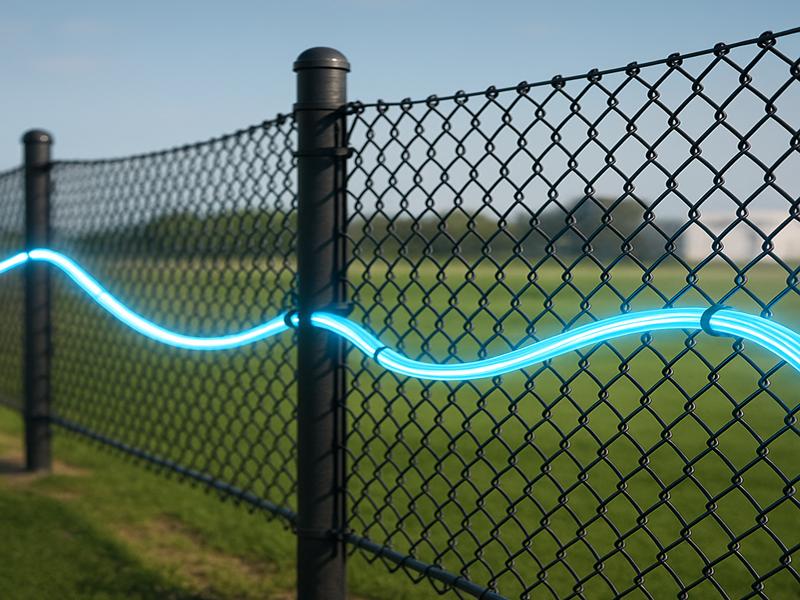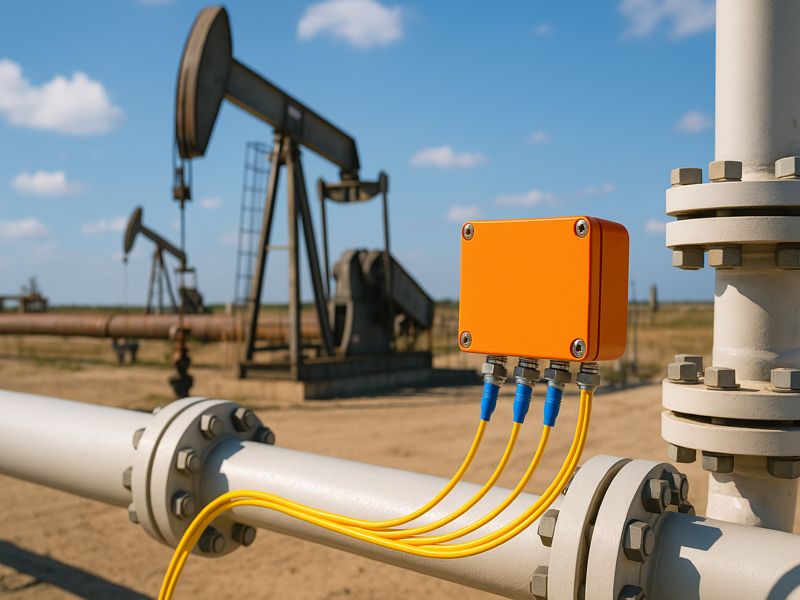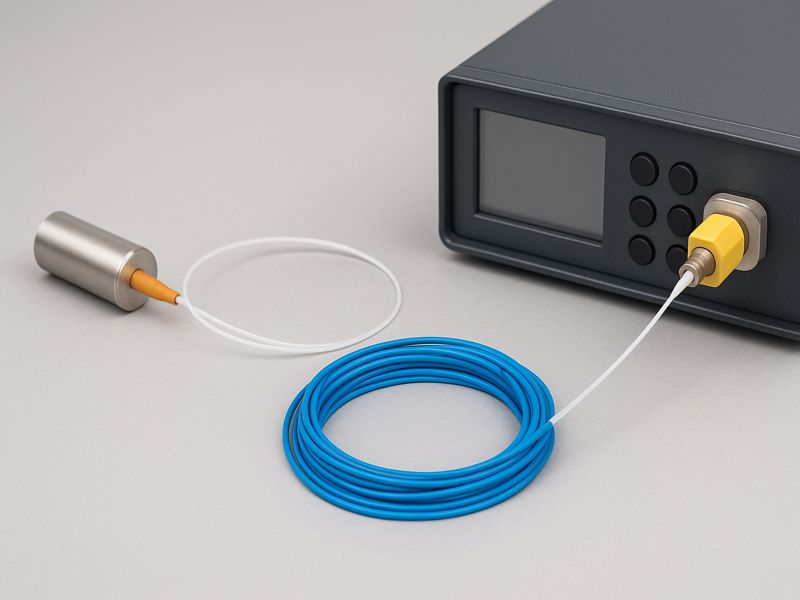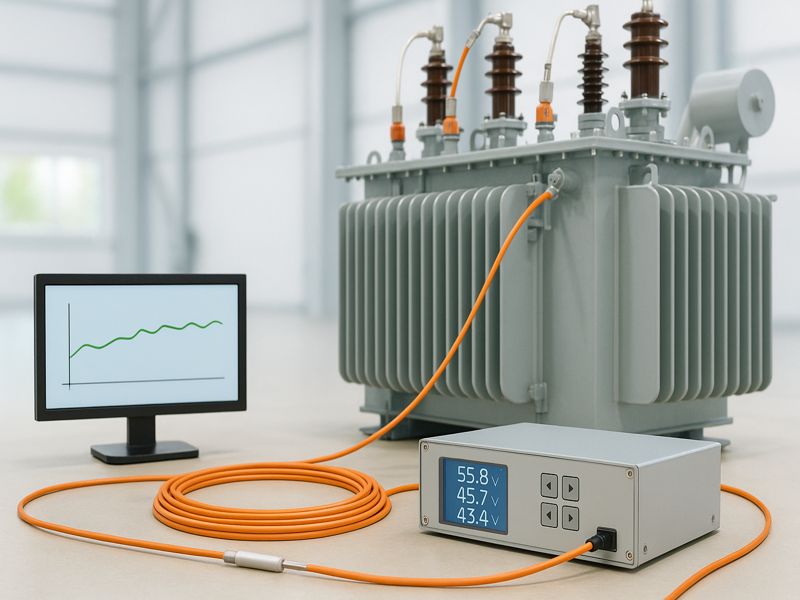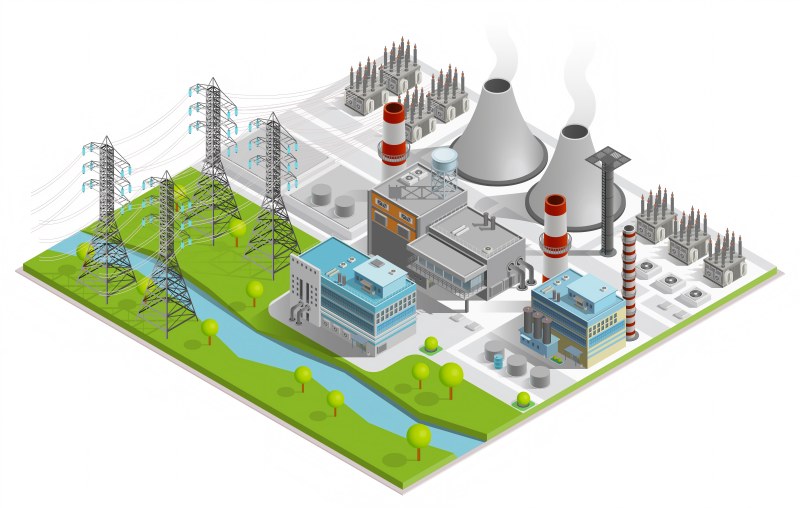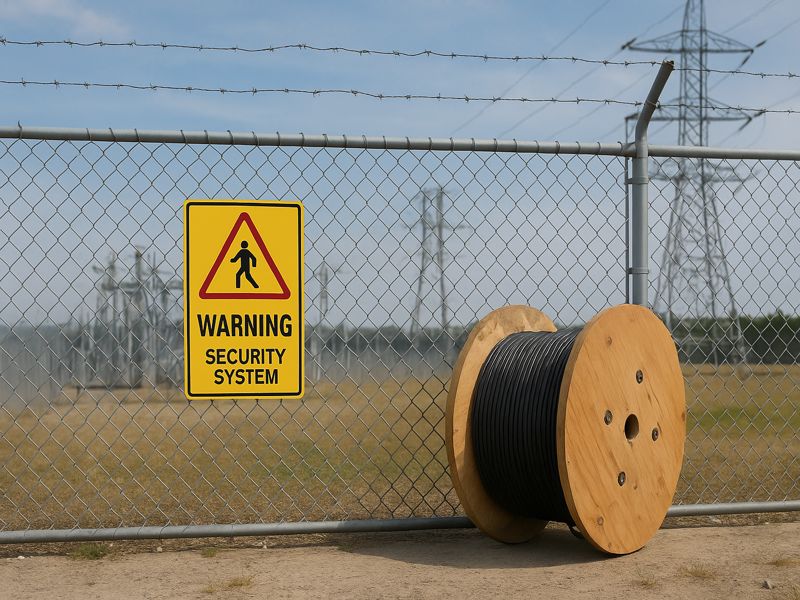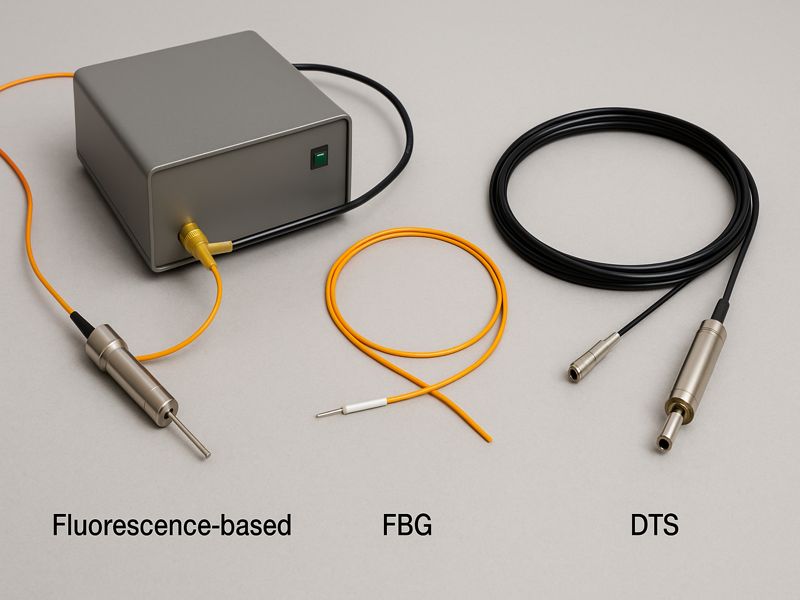FOIDS are transforming security by turning fiber cables into continuous sensors that detect vibrations, temperature shifts, and disturbances along fences, pipelines, or tunnels. Their performance depends on fiber type—Single-Mode (SMF) or Multi-Mode (MMF)—which differ in structure, range, dispersion, and cost. Choosing the right fiber impacts detection accuracy and reliability. This article compares SMF and MMF performance in intrusion detection applications.
Fundamentals of Fiber Optic Sensing in Security Applications
Fiber optic intrusion systems rely on the same principles that govern telecommunication networks, but instead of transferring data, they analyze light scattering patterns to sense physical changes.
A part of the light is reflected back as Rayleigh backscatter when a coherent laser pulse passes through the fiber. Any external vibration, strain, or temperature change alters this signal, allowing distributed sensing technologies such as:
- Distributed Acoustic Sensing (DAS) – detects acoustic or seismic activity.
- Distributed Temperature Sensing (DTS) – identifies heat sources or fires.
- Distributed Strain and Temperature Sensing (DTSS) – measures both deformation and temperature.
The fiber itself becomes the sensing medium — no external sensors are required. This enables long-range, continuous monitoring ideal for perimeter fences, tunnels, and buried pipelines.
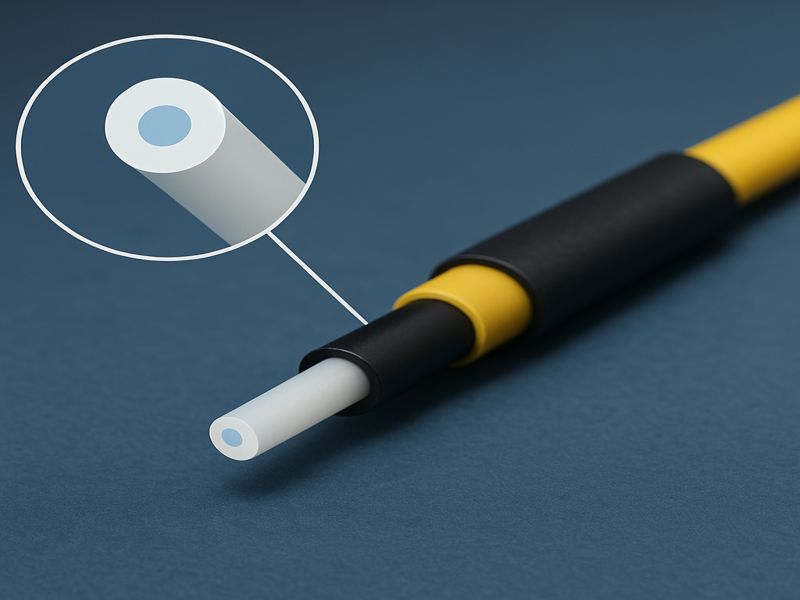
Single-Mode Fiber (SMF): Long-Range Precision
Single-mode fiber has a small core diameter (≈9 µm) that allows only one propagation path (mode) for the light signal. By reducing modal dispersion, this design guarantees that the signal will stay coherent across extended distances.
Key Characteristics
- Operating wavelength: 1310 nm and 1550 nm
- Attenuation: as low as 0.2 dB/km
- Transmission distance: up to 50–80 km without amplification
- Detection performance: highly stable, accurate over long runs
Advantages
- Exceptional long-distance detection (tens of kilometers).
- Low signal noise and consistent backscatter profile.
- Excellent event localization accuracy (±1 m typical).
- High compatibility with distributed acoustic sensing (DAS) interrogators.
Limitations
- Higher cost of transceivers and interrogators.
- Requires tighter splicing and alignment tolerances.
- Slightly less sensitive to small, localized disturbances due to narrow core size.
SMF is the preferred choice for large-scale perimeter, border, and tunnel systems that demand both distance and precision.
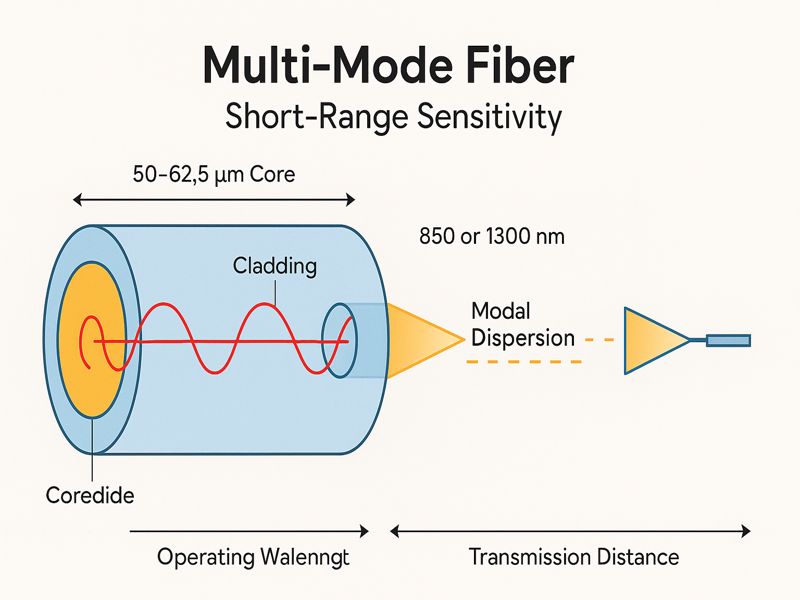
Multi-Mode Fiber (MMF): Short-Range Sensitivity
Multi-Mode Fiber features a larger core diameter (50 µm or 62.5 µm) that allows multiple light propagation paths (modes). This structure increases backscatter intensity, making MMF inherently more sensitive to localized disturbances, but it also introduces modal dispersion — the spreading of signals over distance.
Key Characteristics
- Operating wavelength: 850 nm or 1300 nm
- Attenuation: typically 0.5–1 dB/km
- Transmission distance: usually under 2 km for sensing
- Detection performance: higher local signal amplitude, lower range stability
Advantages
- High local sensitivity due to a large core.
- Easier coupling and installation tolerances.
- Lower equipment and connector costs.
- Ideal for confined or short-distance facilities.
Limitations
- Significant signal loss and dispersion beyond 2 km.
- Modal noise and unstable signal coherence at long range.
- Lower localization accuracy.
MMF systems are well-suited for data centers, short fences, and indoor industrial sites, where detection distances are limited and cost sensitivity is high.
Direct Comparison: Single-Mode vs. Multi-Mode Fiber
| Parameter | Single-Mode Fiber (SMF) | Multi-Mode Fiber (MMF) |
| Core Diameter | 8–10 µm | 50–62.5 µm |
| Propagation Modes | One | Multiple |
| Typical Range | Up to 50 km | 0.5–2 km |
| Backscatter Strength | Lower but stable | Higher but noisy |
| Modal Noise | Minimal | Significant beyond 1 km |
| Localization Accuracy | ±1–2 m | ±3–10 m |
| System Cost | Moderate to High | Low to Moderate |
| Installation Tolerance | Precise alignment required | Easier alignment |
| Best For | Long-range, high-security installations | Short-range, cost-effective systems |
From a system design perspective, SMF offers superior range and accuracy, while MMF prioritizes cost and convenience.
Performance in Specific Intrusion Detection Scenarios
The right fiber choice depends on the operational context — distance, terrain, and threat profile.
| Application Scenario | Recommended Fiber Type | Key Considerations |
| Long Perimeter Fences (e.g., airports, borders) | Single-Mode | Requires long-range detection and minimal false alarms |
| Metro and Railway Tunnels | Single-Mode | Stability under vibration and temperature change |
| Short Facility Perimeters | Multi-Mode | Economical for a < 1 km range |
| Data Centers and Building Intrusion | Multi-Mode | Short run, easy integration with existing fiber |
| Industrial Plants or Refineries | Hybrid (SMF + MMF) | Combines long coverage with localized sensitivity |
Hybrid deployments are increasingly common — using single-mode fiber for long-distance runs and multi-mode for zone-specific detection near entry points or machinery areas.
Sensitivity and Signal Behavior
Acoustic and Vibration Sensitivity
Multi-Mode fiber generates stronger Rayleigh backscatter signals because of its larger core, enhancing local vibration sensitivity.
Single-Mode fiber, although less intense locally, maintains consistent backscatter over long runs, ensuring uniform detection sensitivity.
Localization Accuracy
In distributed acoustic sensing, signal timing and coherence determine event localization. SMF’s single propagation path ensures predictable time delays, allowing precise localization (±1 m) even over 40 km. MMF’s multiple modes can distort timing and reduce accuracy beyond 1–2 km.
Noise and False Alarms
Multi-mode fibers are more prone to modal interference, leading to higher false alarm potential unless advanced filtering algorithms are applied. Single-mode fibers maintain a cleaner baseline, simplifying pattern reco
System Cost and Maintenance
Installation and Hardware Costs
- SMF systems use more sophisticated interrogators with narrow-band lasers and high dynamic range photodiodes, resulting in higher upfront costs.
- MMF systems employ cost-effective light sources (LED or VCSEL) and lower-precision connectors.
Maintenance and Longevity
Both fiber types require minimal maintenance once installed, but SMF offers longer service life in harsh outdoor conditions due to tighter jacket designs and lower signal degradation.
| Cost Category | Single-Mode Fiber | Multi-Mode Fiber |
| Cable Cost (per km) | Moderate | Low |
| Interrogator / Equipment | High | Low to Moderate |
| Installation Complexity | High (precision splicing) | Low |
| Maintenance Frequency | Low | Moderate |
| Total Lifecycle Cost | Higher upfront, lower long-term | Lower upfront, higher long-term |
For organizations prioritizing long-term reliability and reduced false alarms, SMF systems often deliver better ROI despite higher initial costs.
Environmental and Deployment Considerations
Temperature and Humidity
Both SMF and MMF operate effectively between –40 °C and +85 °C, but SMF demonstrates better performance stability under thermal expansion or humidity variation due to smaller core and consistent refractive index profile.
Vibration and Mechanical Stress
Tunnels, bridges, and buried routes expose fibers to vibration. SMF’s lower dispersion maintains accuracy under stress, while MMF can show fluctuating sensitivity with microbends or connector pressure.
Electromagnetic Interference (EMI)
Both fiber types are immune to EMI — a major advantage over copper systems — but SMF’s longer reach allows interrogators to be placed farther from noisy industrial zones.
Hybrid and Emerging Approaches
Hybrid Fiber Networks
Modern FOIDS installations increasingly combine SMF for backbone coverage and MMF for local zones. This approach ensures high accuracy across large sites while minimizing cost for shorter sections.
Advanced Fiber Designs
- Graded-Index Multi-Mode Fibers (GI-MMF): Reduce modal dispersion, extending MMF range up to 5 km.
- Few-Mode Fibers (FMF): Bridge the gap between single- and multi-mode, balancing range and sensitivity.
- Coherent Detection Systems: New interrogators use coherent light sources and digital signal processing to enhance SMF sensitivity.
Smart Analytics
AI-driven signal classification is improving noise suppression for both fiber types. Machine learning models trained on vibration patterns can distinguish environmental noise from genuine intrusion events, reducing nuisance alarms.
Key Selection Criteria for System Designers
When specifying a fiber type for intrusion detection, consider:
Detection Range:
If coverage exceeds 2 km, Single-Mode Fiber is essential.
Localization Accuracy:
SMF provides precision down to meters, crucial for border and tunnel systems.
Cost Constraints:
MMF fits smaller budgets for short-range or indoor detection.
Environment:
Choose SMF for outdoor, long-distance, or harsh conditions; MMF for protected facilities.
Integration:
Evaluate compatibility with existing communication fibers or interrogators.
Case Studies
Case 1: National Border Perimeter
A 45 km perimeter security project deployed SMF-based DAS. The system localized dig and cut events within ±2 m accuracy and operated continuously across all weather conditions. Over three years, the false alarm rate dropped below 1 %.
Case 2: Data Center Perimeter
An indoor data center installed MMF cables around the perimeter for intrusion detection. The larger core increased local acoustic sensitivity, enabling clear distinction between footsteps and door movement — ideal for short (< 1 km) runs.
Case 3: Hybrid Industrial Facility
A refinery used SMF for external fences and MMF for internal restricted zones. The hybrid approach reduced overall cost by 30 % while maintaining reliable coverage.
Future Outlook
The line between single- and multi-mode sensing is gradually blurring. Research in few-mode fibers and graded-index MMF aims to deliver longer reach with better stability, while AI-assisted analytics mitigate modal noise and environmental drift.
In parallel, interrogator costs are dropping as DAS technology matures, making long-range SMF systems accessible to more industries. Standardization under IEC and ITU frameworks is also improving cross-vendor compatibility.
Choosing between single-mode and multi-mode fiber is a fundamental design decision in intrusion detection systems.
- Single-Mode Fiber (SMF) excels in long-range, high-precision applications — such as border surveillance, tunnels, and pipeline monitoring — where accuracy and stability outweigh initial cost.
- Multi-Mode Fiber (MMF) offers a cost-efficient alternative for short perimeters or indoor environments, with simpler installation and stronger localized sensitivity.
In actuality, a lot of security integrators use hybrid systems that capitalize on each fiber’s advantages. As fiber sensing technologies evolve with AI analytics and improved interrogator hardware, designers can expect higher sensitivity, lower false alarms, and more versatile detection capabilities across all environments.
Ultimately, the best fiber isn’t defined by its core size—it’s defined by how well it aligns with your operational range, environmental demands, and security goals.
